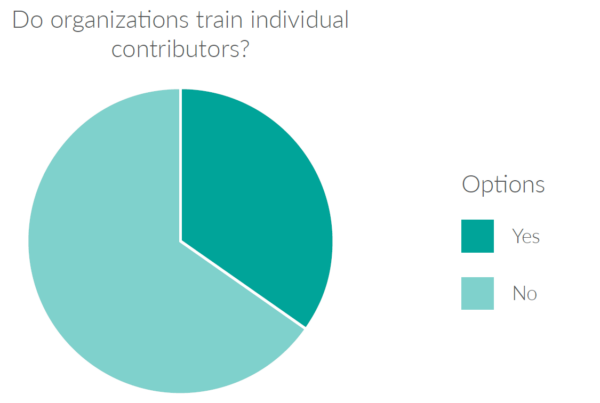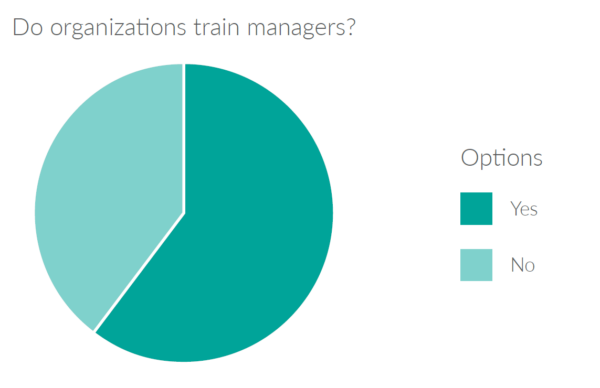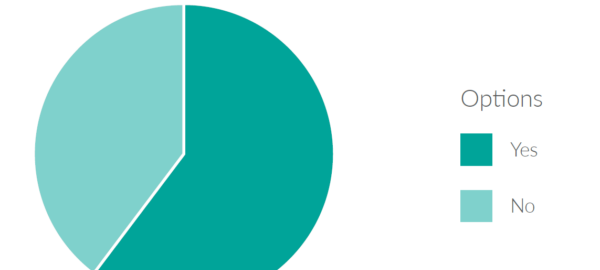When it comes to your company’s recognition program, are you properly training your staff? Just one-third of organizations are training employees in how, when, and why to recognize their peers.
That’s the finding of Achievers Workforce Institute’s 2020 State of Recognition report, released today.
With few organizations training employees on important aspects of recognition such as quality of content or frequency, it’s likely that individuals aren’t making the most of the recognition programs available. Even when training is offered, most organizations are offering it just once, during onboarding. Existing training focuses on the importance of recognition, instead of looking at timing or quality of recognition.

“We know that recognition has to have particular qualities to be effective,” says Achievers’ Chief Workforce Scientist, Natalie Baumgartner. “What makes recognition truly impactful is that it is timely, specific, and values-based. Without training into how to give effective recognition, organizations are missing an opportunity to maximize their employees’ efforts.”
Training for managers was more common, with 61 percent of organizations saying they offer this type of training. That still leaves a third of organizations failing to train their people leaders in how to recognize their direct reports. In addition, this training also focused on the importance of recognition, as opposed to incorporating important factors such as frequency and quality of content. While a third of organizations said they trained managers on an ongoing basis, the majority were trained just once, either when they were hired or when they were promoted.

“Managers are a crucial cog in the recognition machine. They should be modeling the right behaviors, including recognizing their team members frequently, specifically, and relating recognition back to company values,” Dr. Baumgartner says. “Training is an important tool for improving the quality of recognition. We know that recognition is directly connected to engagement, which drives retention and productivity. Having an effective recognition program can significantly impact the bottom line, providing a clear business case for organization leaders to continuously improve their program.”
Training Best Practices for Your Recognition Program
Which training best practices should you incorporate into your recognition program? Below, I share top tips on how to turn your employees into recognition champions.
Make It Regular
Include recognition training in onboarding, promotion, and ongoing training efforts so it’s always top of mind for your teams.
Organization-wide
Every employee in your organization should be trained on how to recognize. From when and how often to recognize, to what goes into a great recognition.
Best practices focused
Recognition alone is not a silver bullet for engagement issues. For recognition to be successful, it must be timely, frequent, specific, and values-based. What does that mean in practice?
- Timely: Recognition should occur quickly after the triggering behavior
- Frequent: Individuals should receive recognition at least once a month
- Specific: The recognition should be as specific as possible. “Thanks for your help” is not as effective as “Thank you for the two hours you spent on your own time to help me solve my computer issues.”
- Values-based: What gets recognized, gets repeated. You can reinforce your values through recognition by tying your recognition program directly to your core company values.
Offer manager-specific training
Managers play an important role in modelling recognition best practices so they should receive additional regular training in how to encourage their teams to recognize effectively and often.
Make your recognition program a success
Recognition is a crucial tool in engaging your workforce, but without the right types and frequency of engagement it is unlikely to move the dial effectively. By training your workforce, especially managers, in how to recognize effectively you can improve the quality of recognitions organization-wide, driving engagement, job satisfaction, team collaboration, and culture alignment.
Do you have any thoughts on this article? Share your comments below.
Business & Finance Articles on Business 2 Community
(51)





